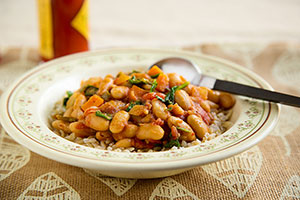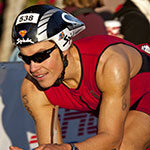Athletics in the Spotlight: Low-Carb vs. High Carb
The right choices at the dinner table make a winning difference in both strength and endurance for top athletes, and the same nutritional rules are true for every other human being. To be our best, we all must eat our best.
In nature there is an ideal diet for each kind of animal: cats devour meat, koala bears eat eucalyptus leaves, and panda bears thrive on bamboo shoots. People also have an ideal diet to look and feel their best and function optimally. However, in our Internet-connected world, correct nutritional information can be hard to recognize with so many conflicting recommendations. Headlines show highly visible athletes choosing polar ends of nutrition: high-carbohydrate (grains, legumes, and potatoes) vs. low-carbohydrate (meat, cheese, and eggs) for winning their events.
 Marc Gasol, a 30-year-old professional basketball star for the Memphis Grizzlies, after sitting on the bench for two months, made a major change to a high-carbohydrate, plant-food-based diet. He lost 20 pounds and improved his score at the hoop.
Marc Gasol, a 30-year-old professional basketball star for the Memphis Grizzlies, after sitting on the bench for two months, made a major change to a high-carbohydrate, plant-food-based diet. He lost 20 pounds and improved his score at the hoop.
Diametrically opposed and in the low-carb boat is Sami Inkinen, a triathlon competitor. His most recent effort to promote the eating of animals and vegetable oil was to row a specially designed water craft in an event called the “Fat Chance Row” 2,400 miles from San Francisco to Honolulu in a record-breaking time. A valuable outcome of his journey was to reinforce the message to cut simple sugars and highly refined flours; but on the damaging side, eating almost exclusively “food poisons” was a disservice to the public.
A Brief History of Carbohydrate Performance
All large populations of trim, healthy, athletic-competing, war-fighting people throughout verifiable human history have obtained the bulk of their calories from high-carbohydrate foods (starches). Examples of thriving populations include the Japanese, Chinese, and other Asians, who eat sweet potatoes, buckwheat, and/or rice; Incas in South America who eat potatoes; Mayans and Aztecs in Central America who eat corn; and Egyptians in the Middle East who eat wheat. Unfortunately, since the global spread of “fossil-fueled” economies beginning in the 1980s, the diets of billions of people have changed to include obesity- and disease-producing amounts of meat, dairy, and vegetable oils.
Today, the running abilities of the Tarahumara people of the Copper Canyon of Northwestern Mexico, and the East Africans from Kenya and Ethiopia provide undeniable evidence that the healthiest diets for human beings are very high in carbohydrates (natural sugars). Members of these communities have exceptional capacities for performance and endurance, which translates into winning.
Historically the Tarahumara are known to run distances of up to 200 miles in a competitive sport of “kickball” races, lasting several days. Honoring their abilities is the 50-mile foot race called “Ultramaraton Caballo Blanco.” These men and women are noted for their absence of obesity and diabetes, and their very low levels of cholesterol and blood pressure. Carbohydrates, primarily from corn, beans, and squash, make up almost 80% of their diet, and meat consumption is rare.
The exceptional running abilities of the Tarahumara are not due to a genetic advantage. People from the same ancestral linage, the Pima of Southwestern US, have some of the highest rates of obesity, diabetes, and coronary heart disease in the world as a direct consequence of adopting a diet based on meat, dairy, and junk food less than a century ago.
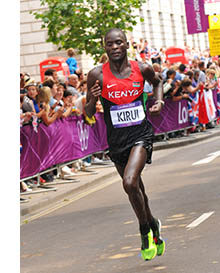 Runners from Kenya have set astonishing middle- and long-distance running records. Kenyan men have accounted for 40% of the winners in all major international middle- and long-distance running competitions between 1987 and 1997. Like the Tarahumara, they follow a diet of about 80% carbohydrates. The staple of their diet is bread, boiled rice, poached potatoes, boiled porridge, cabbage, kidney beans, and ugali (well-cooked cornmeal molded into balls).
Runners from Kenya have set astonishing middle- and long-distance running records. Kenyan men have accounted for 40% of the winners in all major international middle- and long-distance running competitions between 1987 and 1997. Like the Tarahumara, they follow a diet of about 80% carbohydrates. The staple of their diet is bread, boiled rice, poached potatoes, boiled porridge, cabbage, kidney beans, and ugali (well-cooked cornmeal molded into balls).
Scientific Research Consistently Favors Carbs
Thorough reviews of the scientific research and position statements from organizations such as the American Dietetic Association, Dietitians of Canada, and the American College of Sports Medicine recommend a high intake of carbohydrate-derived calories for athletes. The benefits begin as soon as the carbohydrate substances enter the mouth. Their sweetness stimulates the pleasure and reward centers of the brain. Even sweet tasting mouthwashes translate into a benefit for performance of short durations. In longer duration exercise, greater than two hours, where muscle glycogen stores are stressed, performance is enhanced by consuming sugars in simple (table sugar, fruit, etc.) and complex (beans, corn, potatoes, rice, etc.) forms. Athletes also enhance long-duration performance by using manufactured foods and drinks made of glucose and fructose.
What’s the Theory for the Low-Carb Advantage?
Severall writers, long associated with the low-carb, Atkins diet movement, stand out as promoters of a high-meat, high-diary diet for athletes as well as for the general population. (Highly visible names include Noakes, Volek, Phinney, and Westman.) The fairy tale served up to gullible competitors is that after a period of time (called “keto-adaptation”) the human body adjusts to more fat utilization for fuel, and performance improves. Their “science” is soundly debunked in several reviews: two from a popular website and another from thee Sports Dietitians of Australia.
A Life Changer: High-Carb vs. Low-Carb
Athletes, and all others who are considering a low-carbohydrate approach to life, must not overlook the well-established fact that the foods they are choosing (meat, poultry, cheese, seafood, and eggs) dramatically increase the risks of suffering from coronary heart disease, strokes, common cancers, constipation, and obesity. There is the moral issue, too: Livestock is a top contributor and the most controllable variable in global warming and environmental destruction. I (John McDougall, MD) repeat: the most controllable variable.
Fleeting athletic stars make a difference in the diets of millions of people. However, to win the battle for our children’s and grandchildren’s futures, powerful and visible leaders need to step forward now. If presidents Obama (US), Putin (Russia), and Modi (India), pope Francis, governor Brown (California), and other world leaders stood up today and told the truth about the consequences of the human diet, the impact, beginning with their words, would favorably alter life on Planet Earth forever.
See my previous review of Athletic Performance and Diet: Building Your Own High-Performance Athletic Body.
Recommended Articles
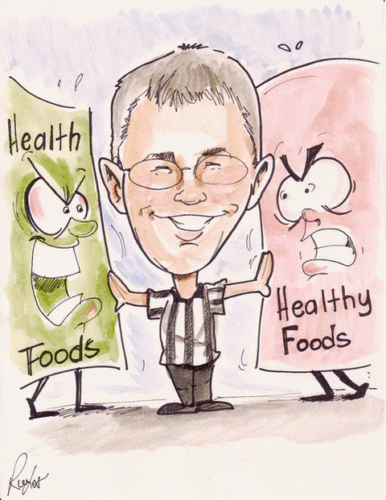
The 10 Most Healthful Packaged Foods
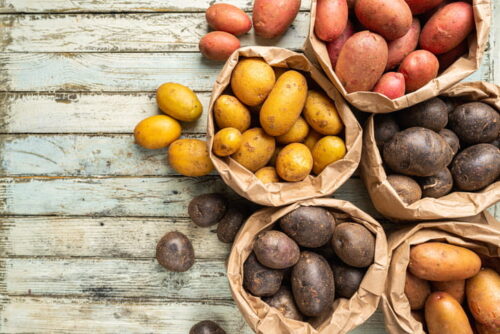
How to Cook Potatoes
